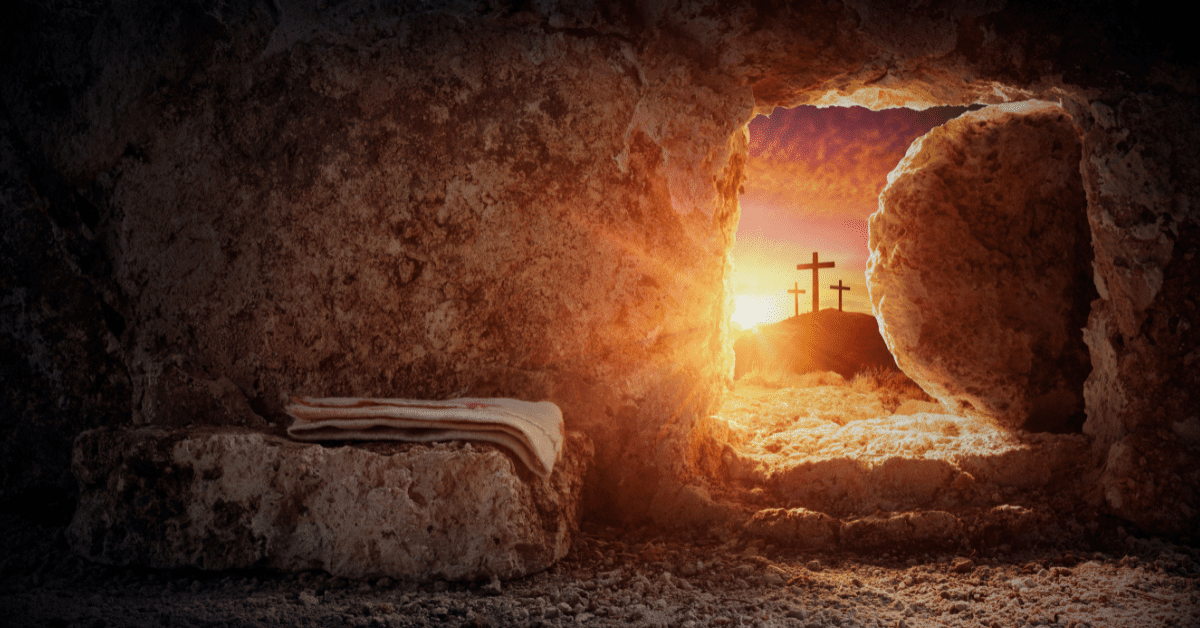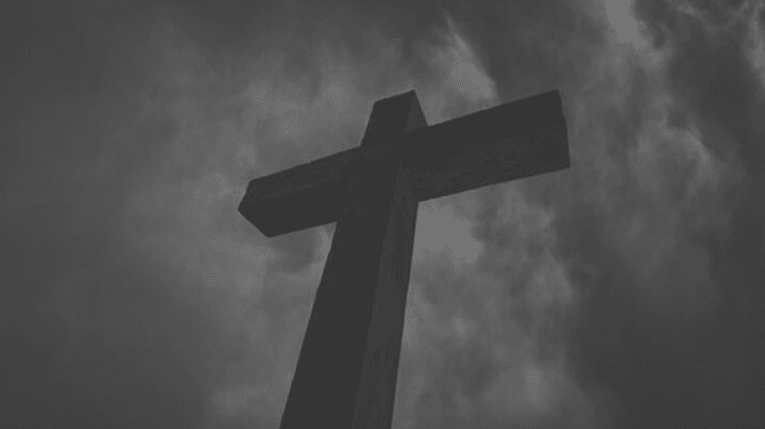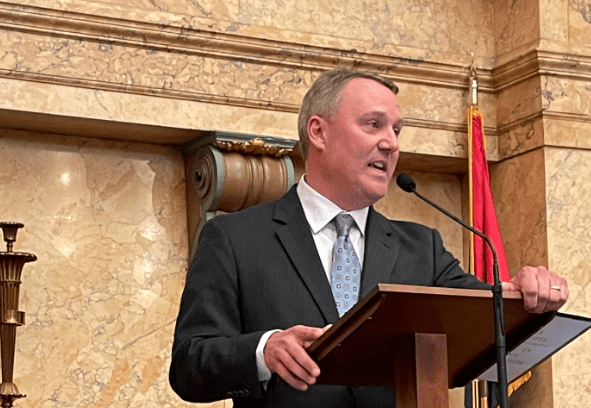
“If Christ has not been raised, our faith is worthless; we are still in our sins.”
This Easter Sunday many of us, from multiple church backgrounds, will sing the words of the great hymn penned by Methodist Charles Wesley “Christ the Lord is Ris’n Today” (1739). It is perhaps the most familiar and well-loved resurrection hymn in the English language, and many hymnologists consider it the best.

Wesley’s text is a variation of an earlier 14th century Bohemian Latin hymn that has also been translated into a well-known Easter hymn called “Jesus Christ Is Risen Today” (often sung to the same tune as “Christ the Lord is Ris’n Today” and thus confused with it).
But why do we sing about the resurrection of Christ anyway? Why is it so important?
We live in a skeptical age, and one of the things that people choke on is the idea of the real, historical, physical resurrection of Christ. You’ve probably heard friends and scholars query the reality of Jesus’s resurrection or try to claim some sort of a psychological resurrection of Christ in our hearts in place of an actual bodily resurrection.
John Updike (1932-2009), the two-time Pulitzer Prize-winning American novelist, poet, short-story writer, literary and art critic, wrote in his “Seven Stanzas at Easter” (1960):
Make no mistake: if he rose at all
It was as His body;
If the cell’s dissolution did not reverse, the molecule reknit,
The amino acids rekindle,
The Church will fall.
It was not as the flowers,
Each soft spring recurrent;
It was not as His Spirit in the mouths and fuddled eyes of the
Eleven apostles;
It was as His flesh; ours.
The same hinged thumbs and toes
The same valved heart
That—pierced—died, withered, paused, and then regathered
Out of enduring Might
New strength to enclose.
Let us not mock God with metaphor,
Analogy, sidestepping, transcendence,
Making of the event a parable, a sign painted in the faded
Credulity of earlier ages:
Let us walk through the door.
The stone is rolled back, not papier-mache,
Not a stone in a story,
But the vast rock of materiality that in the slow grinding of
Time will eclipse for each of us
The wide light of day.
And if we have an angel at the tomb,
Make it a real angel,
Weighty with Max Planck’s quanta, vivid with hair, opaque in
The dawn light, robed in real linen
Spun on a definite loom.
Let us not seek to make it less monstrous,
For our own convenience, our own sense of beauty,
Lest, awakened in one unthinkable hour, we are embarrassed
By the miracle,
And crushed by remonstrance.
Or, to put it in the words of one of the earliest Christians, in one of the earliest extant Christian writings still available to us today:
But if there is no resurrection of the dead, not even Christ has been raised;
(circa A.D. 54, Apostle Paul, First Letter to the Corinthians 15:13-17)
and if Christ has not been raised, then our preaching is vain, your faith also is vain.
Moreover we are even found to be false witnesses of God,
because we testified against God that He raised Christ, whom He did not raise,
if in fact the dead are not raised.
For if the dead are not raised, not even Christ has been raised;
and if Christ has not been raised, your faith is worthless; you are still in your sins.
It’s that stark, isn’t it? “If Christ has not been raised, our faith is worthless; we are still in our sins.” But the good news is that it’s true, all of it. As that same early Christian writer said:
Now I make known to you, brethren, the gospel which I preached to you,
(I Corinthians 15:1-8)
which also you received, in which also you stand,
by which also you are saved, if you hold fast the word which I preached to you,
unless you believed in vain.
For I delivered to you as of first importance what I also received,
that Christ died for our sins according to the Scriptures,
and that He was buried,
and that He was raised on the third day according to the Scriptures,
and that He appeared to Cephas, then to the twelve.
After that He appeared to more than five hundred brethren at one time,
most of whom remain until now, but some have fallen asleep;
then He appeared to James, then to all the apostles;
and last of all, as to one untimely born, He appeared to me also.
That is why all Christians everywhere say, “The third day he rose again from the dead,” and why Christians all over the world are singing:
Christ the Lord is ris’n today, Alleluia!
Sons of men and angels say, Alleluia!
Raise your joys and triumphs high, Alleluia!
Sing, ye heav’ns, and earth, reply, Alleluia!
Lives again our glorious King, Alleluia!
Where, O death, is now thy sting? Alleluia!
Once He died our souls to save, Alleluia!
Where thy victory, O grave? Alleluia!
Love’s redeeming work is done, Alleluia!
Fought the fight, the battle won, Alleluia!
Death in vain forbids His rise, Alleluia!
Christ hath opened paradise, Alleluia!
Soar we now where Christ hath led, Alleluia!
Foll’wing our exalted Head, Alleluia!
Made like Him, like Him we rise, Alleluia!
Ours the cross, the grave, the skies, Alleluia!
Hail the Lord of earth and heaven, Alleluia!
Praise to Thee by both be given, Alleluia!
Thee we greet triumphant now, Alleluia!
Hail the Resurrection, thou, Alleluia!
King of glory, Soul of bliss, Alleluia!
Everlasting life is this, Alleluia!
Thee to know, Thy pow’r to prove, Alleluia!
Thus to sing, and thus to love, Alleluia!
Χριστός Ανέστη! (Christos Anesti!)
Christ is risen! He is risen indeed!











